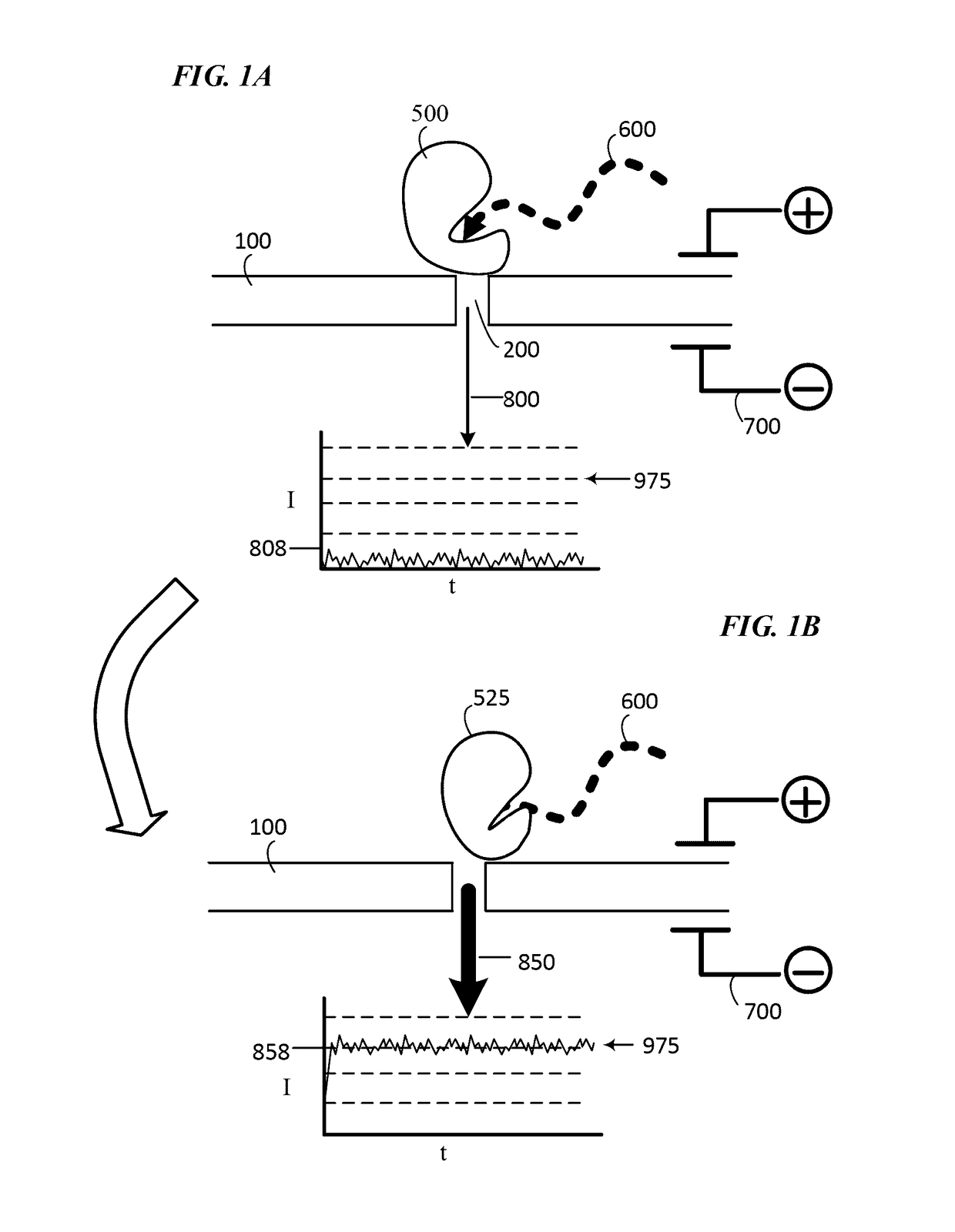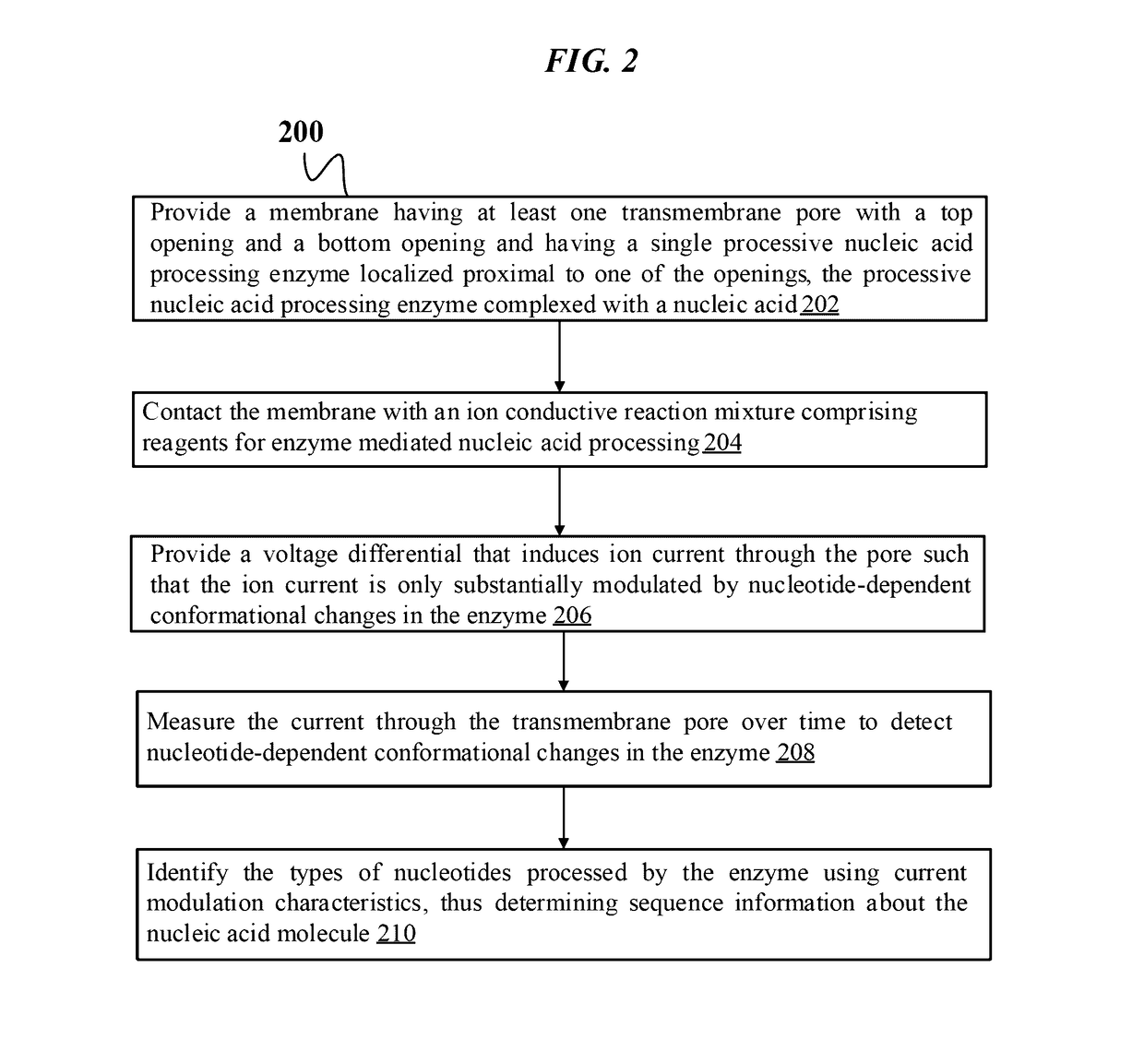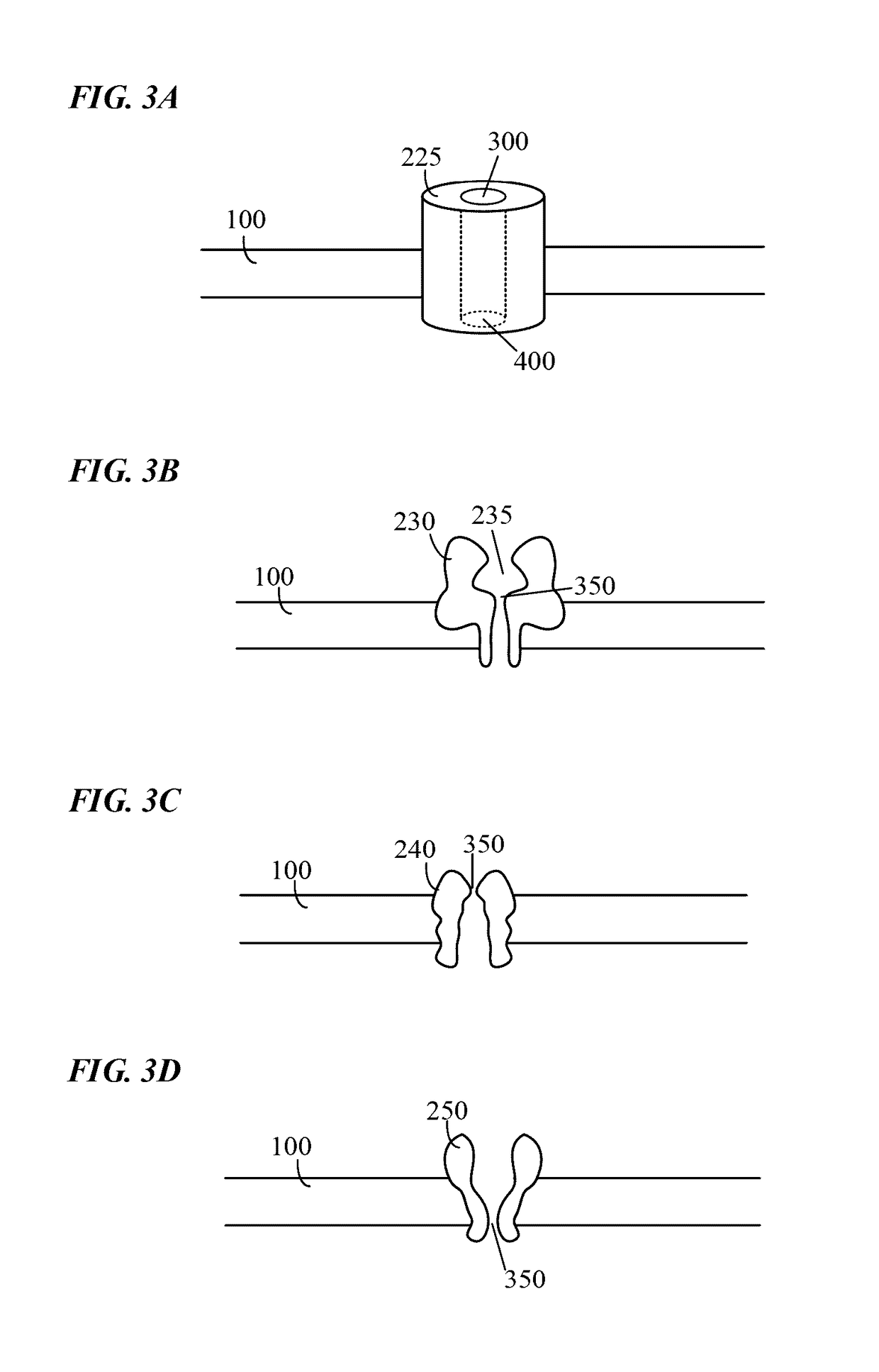Single molecule nucleic acid sequencing with molecular sensor complexes
a technology of molecular sensor complex and which is applied in the field of single molecule nucleic acid sequencing with molecular sensor complexes, can solve the problems of increased inhomogeneity with read length increase, long time to result for second generation methods, and complex sample preparation, etc., and achieves the effect of superior sensitivity of electronic detection
- Summary
- Abstract
- Description
- Claims
- Application Information
AI Technical Summary
Benefits of technology
Problems solved by technology
Method used
Image
Examples
example 1
Assembly of a Polymerase-Based Molecular Sensor Complex
[0148]This example demonstrates assembly of a sensor complex incorporating the Klenow Fragment of DNA polymerase I (KF) and the αHL nanopore. In this example, the polymerase was localized to the nanopore by covalent attachment to a tether construct designed to thread through the nanopore and lock into place by hybridization with a short oligonucleotide anchor on the distal side of the nanopore. KF-tether conjugates were generated by labeling the single native cysteine in the palm region of the polymerase; the cysteine was first activated with 2, 2′-dipyridyldisulfide to form a disulfide conjugate and then conjugated with a reduced sulfhydryl-labeled tether construct. The structure of the tethers used in this Example are set forth in Table 1.
TABLE 1PEGOligonucleotidephosphoramiditetetherrepeats(5′-3′)(L) tail repeats1 7TCAGGTGC342 4TCAGGTGC34311TCAGGTGC34
[0149]The tethers were constructed of three domains (i.e., “segments”): 1) a...
example 2
Klenow Fragment Variant with Repositioned Conjugation Site
[0153]This example describes the generation and preliminary characterization of a KF polymerase variant in which the cysteine conjugation residue was repositioned from the stationary palm domain to the flexible finger domain by a C907S in combination with either a L790C or a S428C amino acid substitutions. The rationale behind this variant was that attachment via a mobile domain might increase the sensitivity of the sensor complex to mechanical movement as the polymerase binds substrates. As a first step in characterizing the variant, the impact of the mutations on polymerase activity were investigated. The KF mutant was conjugated to one of four tether constructs, as described above. In addition to the tethers set forth in Table 1, a fourth tether in which a single nucleotide (T) was engineered into the PEG repeat motif was used. Conjugation was assessed by SDS / PAGE analysis of the polymerase conjugates. As shown in FIG. 11A...
example 3
Optimization of Polymerase Activity in High-Salt Buffers
[0154]To optimize extension activity, the activity of the Klenow fragment (KF) in a variety of nanopore-compatible reaction conditions was investigated. The base reaction conditions were 750 mM NH4Cl, 10 mM HEPES, pH 7.4, 10 mM MgCl2, 1 mM TCEP, 10 mM MnCl2. Variables tested included the amount of PEG 6k (10% or 15%) and DMSO (0%, 5%, 10%, or 20%) additives. Extension of a labeled 21mer primer hybridized to a short template was carried out for 10 minutes at 20° C. for each reaction and products were analyzed by standard gel electrophoresis. As shown in FIG. 12A, the KF tolerates a broad range of additive levels, though optimal extension activity appears to occur with higher levels of PEG combined with lower levels of DMSO.
[0155]Next, the effect of different levels of MnCl2 and PEG 6k on extension activity in a high salt buffer was investigated. In this experiment, the base reaction conditions were 1M NH4OAc, 10 mM HEPES, pH 7.4...
PUM
| Property | Measurement | Unit |
|---|---|---|
| size | aaaaa | aaaaa |
| diameter | aaaaa | aaaaa |
| diameter | aaaaa | aaaaa |
Abstract
Description
Claims
Application Information
 Login to View More
Login to View More - R&D
- Intellectual Property
- Life Sciences
- Materials
- Tech Scout
- Unparalleled Data Quality
- Higher Quality Content
- 60% Fewer Hallucinations
Browse by: Latest US Patents, China's latest patents, Technical Efficacy Thesaurus, Application Domain, Technology Topic, Popular Technical Reports.
© 2025 PatSnap. All rights reserved.Legal|Privacy policy|Modern Slavery Act Transparency Statement|Sitemap|About US| Contact US: help@patsnap.com



